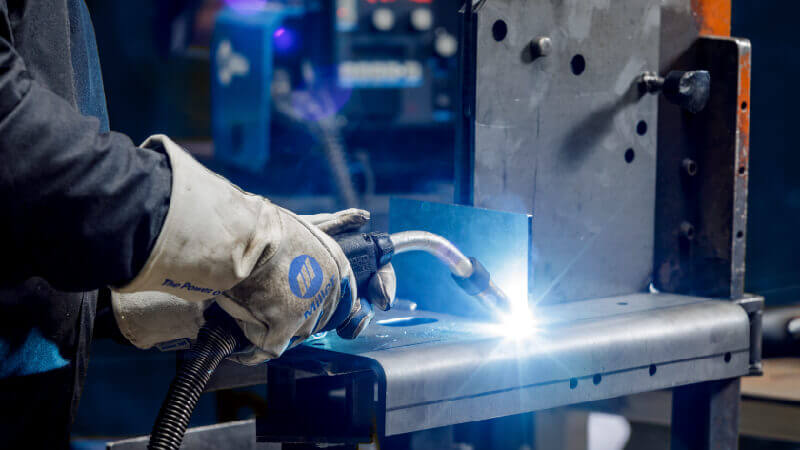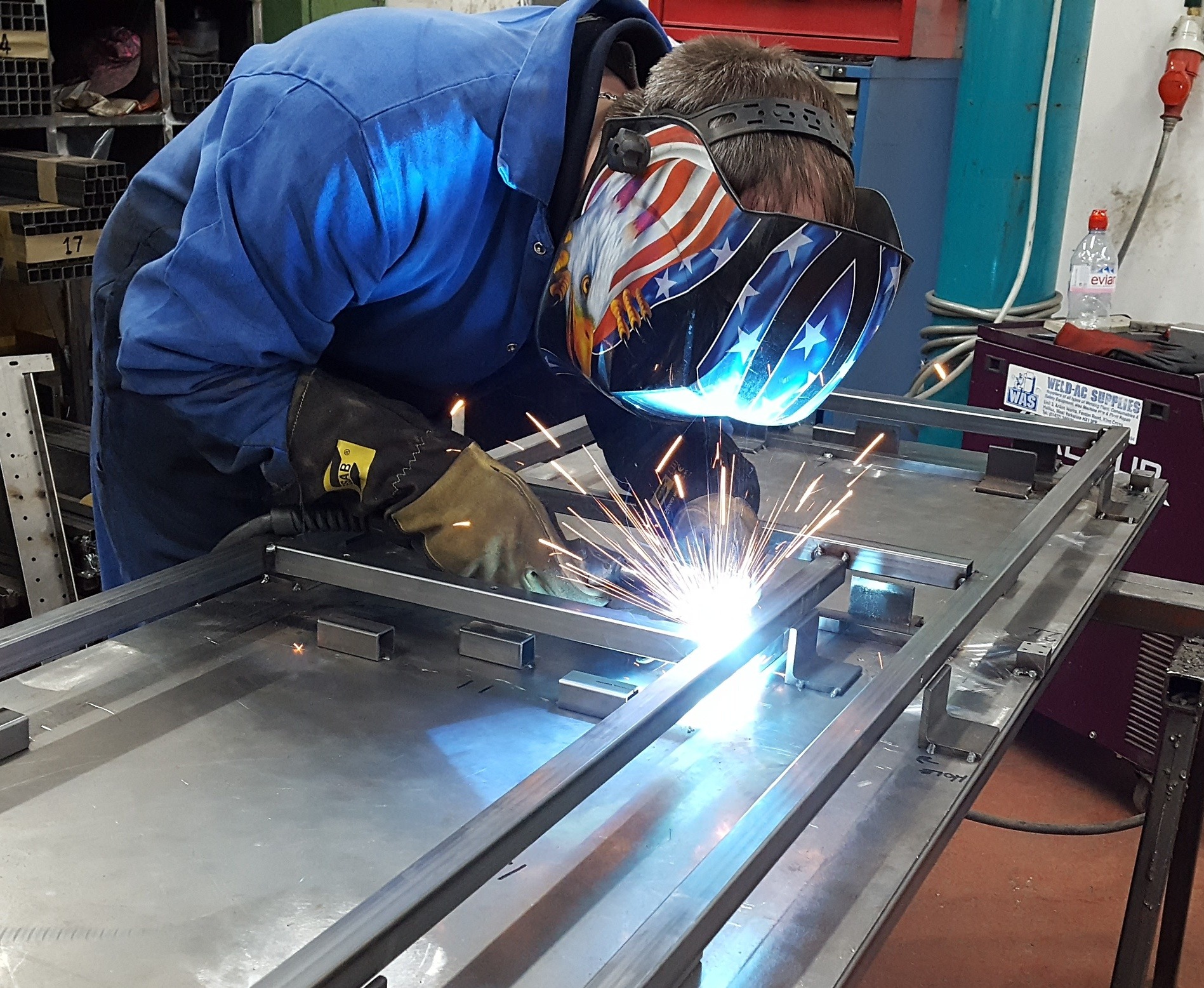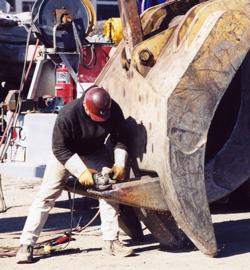Usual Welding Repair Work Issues and Exactly How to Address Them Properly
Welding repair services frequently come across a series of issues that can threaten the integrity of the last item. Common troubles consist of poor penetration, porosity, and imbalance, amongst others. Each defect presents unique difficulties that require specific techniques for resolution. Understanding these problems is important for welders aiming to improve their end results and abilities. This discussion will check out these typical welding repair service issues and reliable methods to address them.
Inadequate Penetration
Inadequate infiltration takes place when the weld steel falls short to completely fuse with the base product, leading to weak joints and potential structural failings. This problem usually originates from not enough warmth input, incorrect electrode angle, or inappropriate welding speed. Welders might encounter poor infiltration as a result of a mistake of the required specifications for a particular material density or type. In addition, contamination on the base material's surface area can hinder effective bonding, intensifying the problem. To address poor infiltration, welders ought to ensure suitable settings on their devices and preserve a tidy work surface area. Routine inspection of welds is suggested to determine any shortages early, enabling prompt adjustments and the avoidance of compromised structural honesty in bonded assemblies.
Porosity
Porosity is an usual issue in bonded joints that materializes as tiny gas bubbles trapped within the weld steel. This issue can compromise the honesty of the weld, leading to lowered stamina and possible failing under stress and anxiety. Belgrade Welding. Porosity typically occurs from contamination, wetness, or inappropriate welding strategies, which enable gases to get away into the liquified weld pool. To attend to porosity, welders need to guarantee correct surface prep work, keep a tidy workplace, and make use of suitable welding criteria. In addition, choosing the ideal filler product and protecting gas can alleviate gas entrapment. Routine assessment and screening of welds can aid recognize porosity early, ensuring timely restorative activities are taken, consequently maintaining the quality and dependability of the welded framework
Misalignment
Misalignment in welding can occur from different factors, consisting of inappropriate setup and thermal expansion. Recognizing the origin is essential for reliable resolution. Several adjustment strategies are available to straighten parts and ensure architectural honesty.
Reasons of Misalignment
Welding misalignment often comes from a range of underlying problems that can endanger architectural stability. One key reason is inappropriate fit-up of elements before welding, which can result in spaces and uneven surfaces. Variants in thermal growth during the welding procedure can likewise cause distortion, specifically if the products being joined have various coefficients of growth. Additionally, inadequate clamping and fixturing might stop working to hold parts firmly in location, resulting in activity during welding. Inadequately maintained equipment, consisting of welding makers and tools, may present incongruities in the weld grain, further adding to misalignment. Operator error, stemming from not enough training or experience, can additionally play a significant role in developing misaligned welds.

Correction Strategies Offered
Resolving imbalance effectively requires a mix of restorative techniques customized to the particular concerns at hand. One usual technique is making use of fixtures or jigs to hold parts in the proper placement throughout welding, making sure regular positioning. Furthermore, preheating the materials can help in reducing distortion and improve fit-up. For considerable imbalance, mechanical realignment techniques, such as utilizing hydraulic jacks or clamps, can be utilized to correct the setting before welding. Post-weld warm treatment may likewise be necessary to alleviate stresses brought on by misalignment. Careful evaluation and adjustment during the arrangement stage can stop imbalance issues from becoming significant problems, promoting a smoother welding procedure and boosting overall structural stability.
Distortion
Distortion is a common obstacle in welding that can emerge from different variables, including uneven heating & cooling. Understanding the sources of distortion is essential for executing efficient prevention strategies. Addressing this problem not just enhances structural integrity yet additionally enhances the general top quality of the weld.
Root causes of Distortion
When based on the extreme warm of welding, products usually undertake changes that can lead to distortion. This sensation largely occurs from thermal expansion and contraction during the welding process. As the weld location warms up, the product expands; upon air conditioning, it acquires, which can create interior anxieties. Additionally, irregular heating throughout a work surface can exacerbate these stress and anxieties, causing bending or flexing. The type of material also plays a considerable role; metals with varying thermal conductivity and coefficients of growth may respond differently, bring about unforeseeable distortions. Additionally, bad joint style and inadequate fixturing can contribute to misalignment during welding, enhancing the possibility of distortion. Comprehending these reasons is crucial for reliable welding repair service and avoidance strategies.
Avoidance Techniques
Effective prevention techniques for distortion throughout welding focus on managing heat input and guaranteeing correct joint design. Maintaining a regular warm input aids to decrease thermal expansion and tightening, which can cause distortion. Using methods such as preheating the workpiece can additionally decrease the temperature gradient, advertising uniform home heating. In addition, selecting proper joint layouts, such as T-joints or lap joints, click this site can improve stability and lower stress and anxiety concentrations. Executing appropriate fixturing to protect the work surfaces in position further aids in preserving alignment throughout the welding procedure. Staggered welding sequences can distribute heat more uniformly, avoiding localized distortion. By using these my company strategies, welders can greatly lower the probability of distortion and improve the overall high quality of their welds.
Splitting
Fracturing is a typical problem experienced in welding repair services, often arising from different elements such as inappropriate air conditioning rates, product choice, or insufficient joint prep work. The incident of cracks can significantly compromise the stability of the weld, resulting in prospective failures during procedure. To resolve this concern, welders have to first evaluate the source, making certain that materials work and properly chosen for the details application. Additionally, regulating the air conditioning rate throughout the welding process is important; quick cooling can induce stress and cause fracturing. Appropriate joint style and prep work also contribute to reducing the threat. Carrying out these strategies can improve weld high quality and longevity, inevitably minimizing the chance of cracking in completed weldments.

Incomplete Combination
A significant issue in welding repair services is incomplete blend, which happens when the weld metal does not adequately bond with the base product or previous weld passes - Fabrication. This defect can cause weaknesses in the joint, possibly endangering the honesty of the bonded structure. Variables adding to insufficient blend consist of insufficient heat input, incorrect welding method, and contamination of the surfaces being joined. To resolve this problem efficiently, welders should assure appropriate pre-weld cleaning and surface area preparation, along with readjust their welding criteria to accomplish ample penetration and fusion. Normal inspection during the welding process can likewise assist identify insufficient fusion early, enabling prompt rehabilitative steps why not check here to enhance the general quality of the weld
Overheating
While welding repairs can enhance structural honesty, overheating offers a considerable obstacle that can result in material deterioration. Extreme warmth throughout welding can modify the mechanical homes of metals, resulting in reduced strength, raised brittleness, and warping. This sensation is specifically vital in high-stress applications where structural reliability is paramount. Identifying overheating can involve visual inspections for discoloration or distortion, as well as keeping track of temperature level throughout the welding process. To mitigate the risks related to getting too hot, welders ought to utilize appropriate methods, such as regulating warmth input, adjusting traveling rate, and making use of appropriate filler products. Additionally, executing pre- and post-weld warm treatments can help recover product homes and enhance the overall quality of the repair, guaranteeing long-term efficiency and safety and security.
Frequently Asked Questions
What Are the Usual Indicators of a Welding Problem?

Just How Can I Test My Welds for Quality?
To test welds for top quality, one can use visual inspections, ultrasonic screening, and radiographic approaches. Each technique ensures architectural honesty, determines problems, and confirms adherence to specified criteria, eventually boosting the dependability of the bonded joints.
What Security Preventative Measures Should I Take While Welding?
When welding, one need to focus on safety by wearing ideal individual safety devices, guaranteeing proper air flow, securing flammable products away, preserving a clean work area, and recognizing environments to protect against injuries and accidents.
Can I Fix a Weld Without Renovating the Entire Joint?
Fixing a weld without renovating the entire joint is possible, relying on the damages (Fabrication). Techniques such as grinding, adding filler product, or making use of a welding process can properly resolve specific defects while protecting the bordering framework
What Devices Are Important for Reliable Welding Repair Works?
Vital tools for effective welding fixings include a welding equipment, cord brush, grinder, protective gear, clamps, and filler materials. Each device plays an essential function in guaranteeing high quality and safety during the fixing process. Porosity commonly occurs from contamination, moisture, or inappropriate welding techniques, which enable gases to leave into the liquified weld pool. Badly maintained tools, including welding equipments and devices, may introduce inconsistencies in the weld grain, further contributing to misalignment. When subjected to the intense heat of welding, materials often go through modifications that can lead to distortion. Breaking is an usual problem experienced in welding repairs, often resulting from various variables such as incorrect cooling prices, product option, or insufficient joint prep work. A considerable problem in welding repair services is insufficient blend, which occurs when the weld steel does not adequately bond with the base material or previous weld passes.